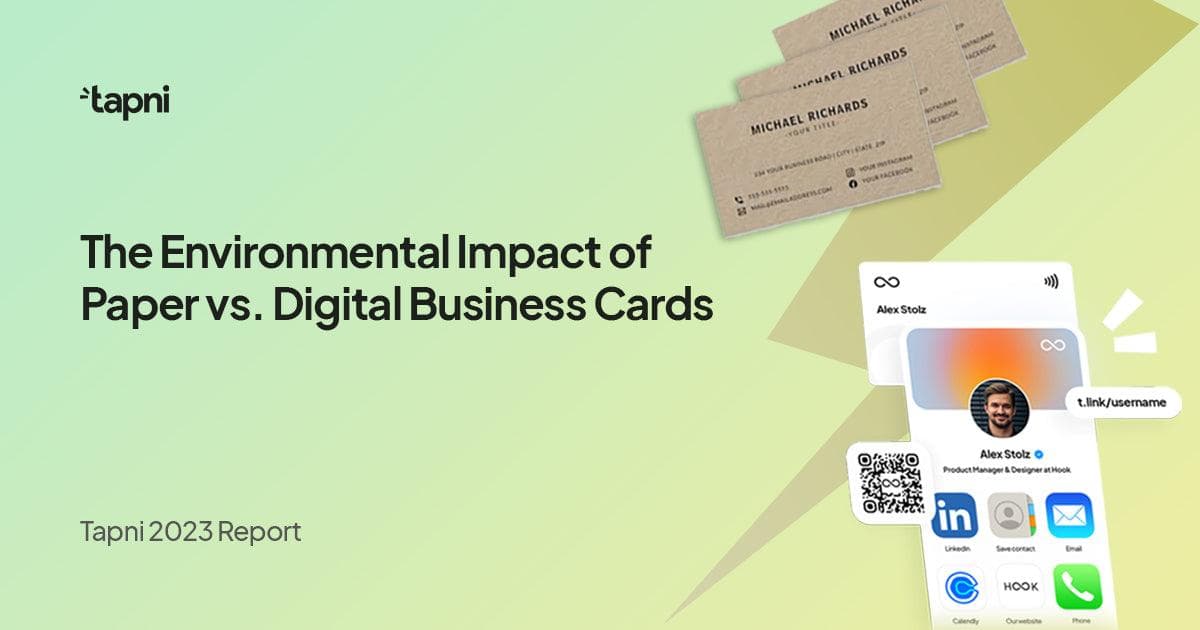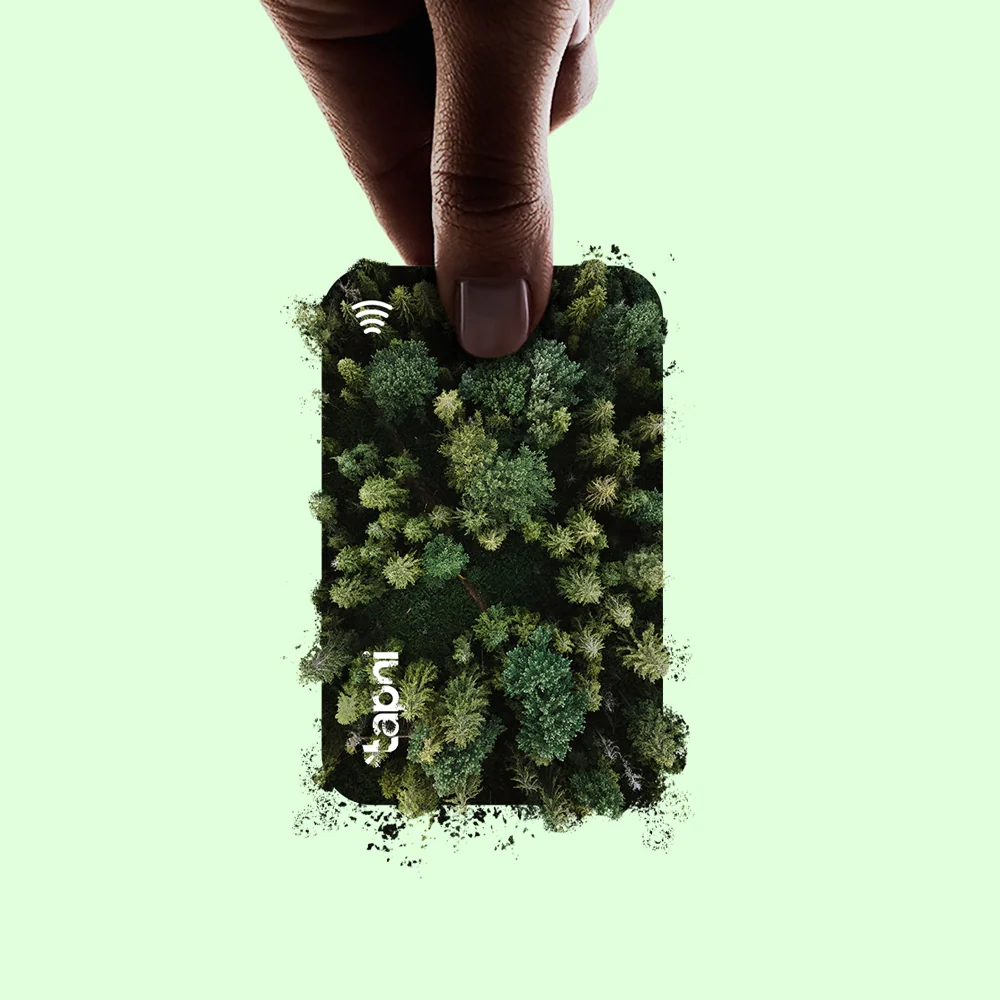Browse our comprehensive product guides and documentation


In today's digital age, the environmental impact of traditional paper business cards compared to NFC (Near Field Communication) digital business cards has become a topic of concern. Paper business cards have been used for decades, but their impact on the environment is increasingly alarming. This article explores the environmental consequences of paper business cards and sheds light on the advantages and disadvantages of NFC digital business cards from both a sustainability and technological perspective.
Paper production heavily relies on trees, resulting in deforestation and depletion of natural resources. As a result, paper business cards contribute to environmental degradation. Consider these alarming statistics:

The paper manufacturing process consumes substantial amounts of water and energy, further contributing to environmental degradation. Consider these eye-opening figures:
NFC digital business cards offer a sustainable alternative that minimizes environmental impact and reduces reliance on paper. By adopting NFC digital business cards, the need for paper production decreases significantly, resulting in the preservation of valuable resources. Consider the following:
If everyone in the United States used digital business cards, it would save approximately 6 million trees every year. This reduction in paper production also eliminates the release of 161 billion liters of wastewater, a by-product of paper manufacturing.
NFC digital business cards offer advantages in reducing water pollution and energy consumption when compared to traditional paper business cards. Consider these compelling numbers:

While paper business cards hold certain advantages, they also have inherent drawbacks:
Paper business cards add a tangible and personal element to networking interactions. Consider the following:
Paper business cards have a limited lifespan and contribute to waste generation. Consider the following statistics:
NFC digital business cards offer several advantages over their paper counterparts, but they also come with certain limitations. Here are the facts:
NFC digital business cards provide convenience and versatility in contact information exchange. Consider the following:

While NFC digital business cards provide numerous benefits, they do come with a degree of technological dependency and accessibility considerations:

In conclusion, the environmental impact of paper business cards is significant, with deforestation, water pollution, and energy consumption being primary concerns. NFC digital business cards offer a sustainable alternative, reducing reliance on paper and minimizing environmental consequences. While paper business cards provide a tangible and personal touch, they have a limited lifespan and contribute to waste generation. On the other hand, NFC digital business cards offer convenience, versatility, and reduced environmental impact. However, technological compatibility and accessibility remain factors to consider.
In terms of ecological impact, NFC digital business cards have a smaller ecological footprint compared to paper business cards. While the manufacturing process of NFC technology does have its environmental impact, the overall reduction in paper consumption, deforestation, water pollution, and energy consumption makes digital cards a more environmentally friendly option. The choice between paper and digital business cards should be based on individual preferences, environmental consciousness, and the context in which networking takes place.
Moreover, digital business cards may incorporate advanced features such as augmented reality (AR) elements, geolocation-based information, or seamless integration with other digital platforms. The development of eco-friendly materials and sustainable manufacturing processes for NFC technology itself is also a possibility, further enhancing the environmental credentials of digital business cards.
The cost of NFC digital business cards can vary depending on factors such as design complexity, quantity, and additional features. While the initial investment for NFC-enabled devices may be higher, digital cards eliminate the need for continuous reprinting, reducing long-term costs. The overall cost comparison depends on individual requirements and preferences.
NFC digital business cards offer multiple sharing options. If the recipient's device lacks NFC capability, they can still receive the card by scanning a QR code or obtaining it through email or messaging platforms. This ensures compatibility with a broader range of devices, making sharing convenient and inclusive.

The transition from paper to digital business cards is gaining momentum, but whether they completely replace traditional paper cards depends on various factors. Cultural norms, personal preferences, and specific industries may still value the tangible nature of paper cards. However, as technology advances and environmental concerns grow, the adoption of digital alternatives is likely to increase.